Top 20 Probiotic Foods (and Drinks) to Fuel a Healthy, Happy Gut
Boost your microbiome by noshing on these options regularly.
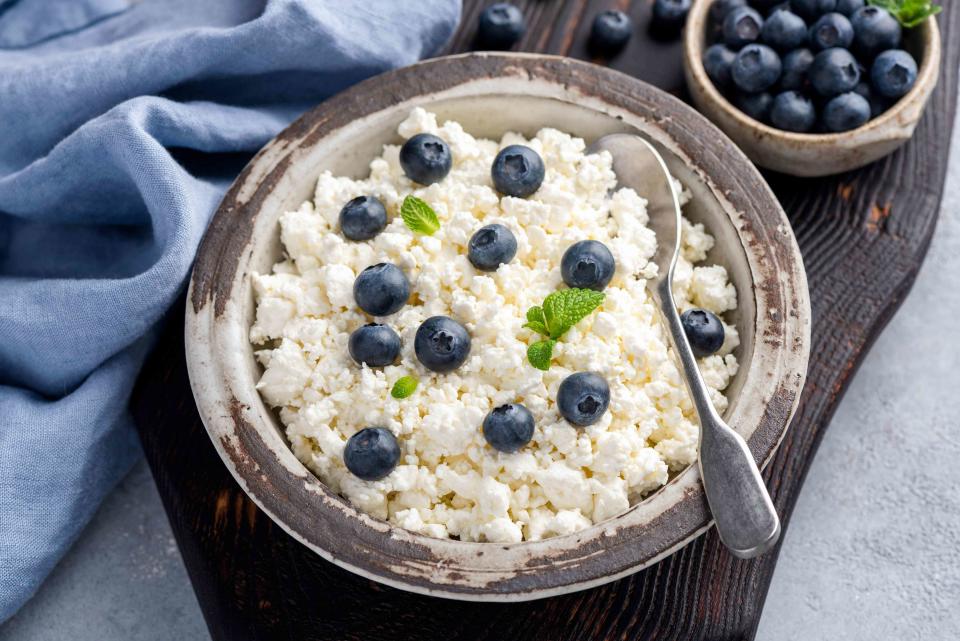
Arx0nt/Getty Images
Probiotics may be a buzzword these days, but humans have been consuming probiotic-rich foods for thousands of years. Probiotics are beneficial, living microorganisms (including a variety of bacteria and yeasts) that multiply in foods through the process of fermentation—a common practice among ancient civilizations worldwide as a means of food preservation.
There have been various iterations of the word "probiotics" since it was first coined in 1960, particularly in terms of food labeling. The International Scientific Association of Probiotics and Prebiotics further defines probiotics as microorganisms that must be able to confer defined health benefits on the host and states that "only characterized strains with a scientifically demonstrated effect on health should be called probiotics." However, for the purpose of this article, probiotics will be discussed in terms of their broader definition: as food sources that may include varying strains of live bacteria, which support the gut microbiome.
How Do Probiotics Work?
Probiotics help the body achieve and maintain a healthy balance of bacteria, especially in the lining of your gut. They can also help restore the “good” bacteria in your body that get wiped out after taking antibiotics (which unfortunately don’t differentiate between good bacteria and the infection-causing ones), ultimately protecting the gut from more harmful bacteria and strengthening the gut microbiome overall.
Related: The 5 Best Fermented Foods for a Healthier Gut
The Brain and Body Benefits of Probiotics
Evidence shows that probiotics are extremely beneficial for overall health and wellness because of the role they play in the gut microbiome. Probiotics have been recognized for supporting digestive health, mental health, and overall immune function.
“Probiotics are beneficial for the gut, however, they can be helpful for general health as they can improve your immune system and reduce the risk of infections, aid in digestion, reduce risk of harmful microorganisms, assist with nutrient absorption, and even help with vitamin production,” says Amy Archer RDN, CLT, CHWC, registered dietitian nutritionist and owner of Wellness RD.
More and more research is also emerging that shows the benefits of probiotics for mental health due to the two-way connection between the gut and the brain, known as the gut-brain axis. In fact, the gut has even been called a “second brain” because of all of the neurotransmitters it produces, including serotonin and dopamine, which help regulate mood.
“Components of the microbiome are central to mental health research and treatment,” confirms Drew Ramsey, MD, board-certified psychiatrist, author, and mental health advocate. “Mental health depends on the proper digestion of our food and the absorption of lots of different minerals and phytonutrients. [N]ew science shows active biological processes and communications between organisms that live in the gut and the rest of our body.”
Best Probiotic Foods
In short, the entire body benefits from a well-balanced, healthy gut, and one of the most effective ways to achieve a healthier gut is to consume more probiotic foods on a regular basis. Here are 20 of the all-time best probiotic food options to choose from (so you’ll never get bored).
Kefir
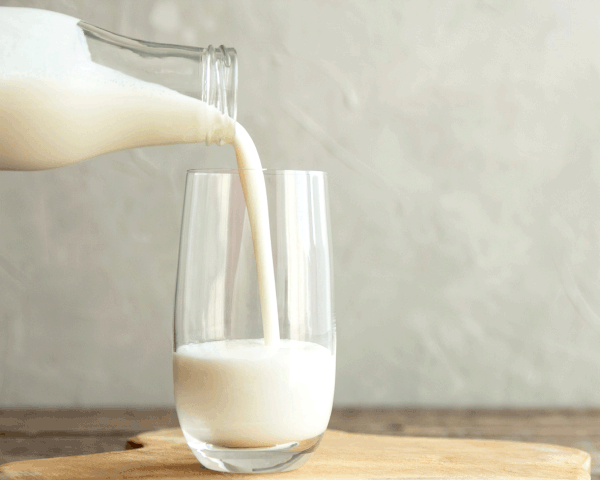
Getty Images
Kefir is a fermented milk drink made from kefir grains. Originating in the Caucasus at the intersection of Asia and Europe, it’s one of the richest food sources of probiotics, as it’s fermented with both bacteria and yeasts. Kefir can be consumed alone as a beverage or even added to smoothies or overnight oats. Plant-based? No problem. Kefir Lab makes a vegan coconut-based version with 17 different probiotic strains.
Yogurt and Yogurt Drinks
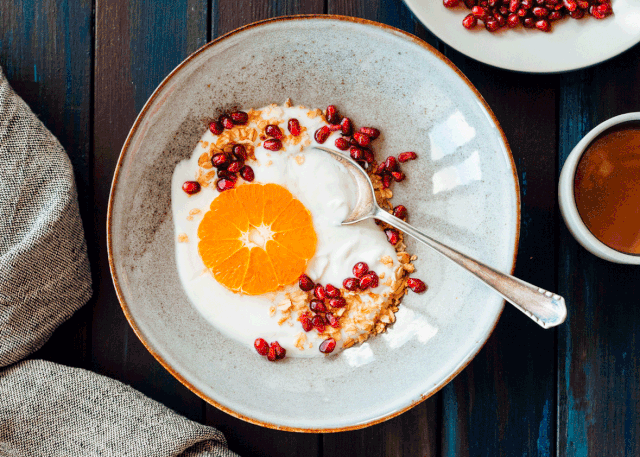
Getty Images
Cultures around the world have various versions of yogurt and yogurt beverages. Yogurt is made by heating milk, cooling it, and then combining it with two live cultures, Lactobacillus bulgaricus and Streptococcus thermophilus. Some yogurts may even contain other strains of beneficial bacteria, which will be listed in the ingredients. Whether you prefer plain or flavored yogurt, Greek yogurt, French yogurt, Icelandic skyr, lactose-free yogurt, or a yogurt drink such as Indian lassi, it’s likely to be a good source of probiotics. Just be mindful of added sugar in yogurts, since some are much higher than others.
Related: The 7 Healthiest Yogurt Brands You Can Buy, According to an RD
Cultured Cottage Cheese
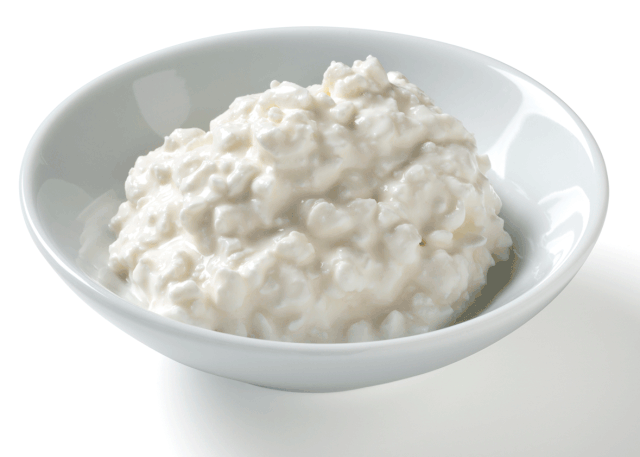
Getty Images
Cottage cheese is made by culturing milk with bacteria and then draining curds, but keeping them loose (not pressing) to retain some of the whey. Not all cottage cheese contains probiotics, so look for ones with “Live Active Cultures” on the label, like this one by Good Culture.
Related: 5 Ways to Cook With Cottage Cheese for More Protein, According to TikTok
Labneh
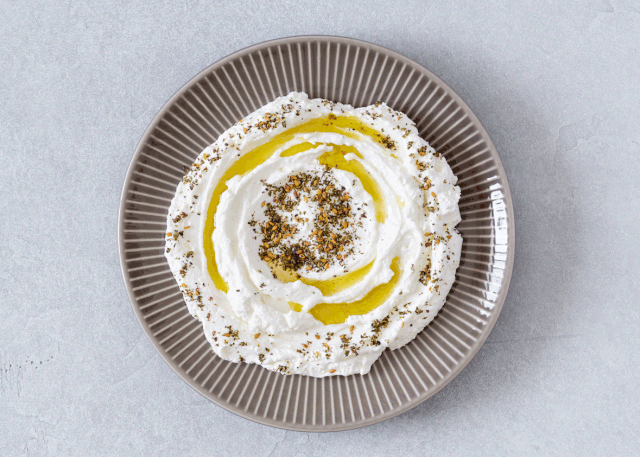
Getty Images
Labneh is a thick and creamy Middle Eastern yogurt cheese made from strained yogurt. Greek yogurt is also a strained yogurt, but labneh is strained even more, making it more similar to the texture of cream cheese than yogurt. As long as the labneh is made with yogurt that has live active cultures and is not heated, the labneh retains the same probiotic benefits. Store-bought varieties are available, but it’s also very easy to make at home!
Kimchi

Getty Images
Kimchi is a traditional Korean side dish, or banchan, made with fermented napa cabbage and daikon radish, and flavored with garlic, ginger, and Korean chilies. Kimchi has been a fundamental part of Korean cuisine and is frequently made at home, and due to its recognition as a superfood and its unparalleled flavors, it’s now become more mainstream and can be found in nearly every supermarket nationwide.
Sauerkraut

Getty Images
Sauerkraut dates back to the Roman Empire and is thought to have been a part of the American diet since its founding. It also happens to be one of the best food sources of probiotics. Sauerkraut is made from salted cabbage that undergoes natural lacto-fermentation over time. The only ingredients needed to make sauerkraut are cabbage and salt, plus the right environment and time. The salt is a key ingredient since it brings out the water in the cabbage, creating a natural brine. Sauerkraut is one of the simplest, but most powerful fermented foods; beyond probiotics, sauerkraut offers a variety of health benefits and can be the ultimate salty-crunchy condiment, making it a favorite among dietitians and chefs alike. Make it yourself or look for unpasteurized, store bought varieties found in the refrigerated sections like the ones from Cleveland Kitchen.
Kombucha
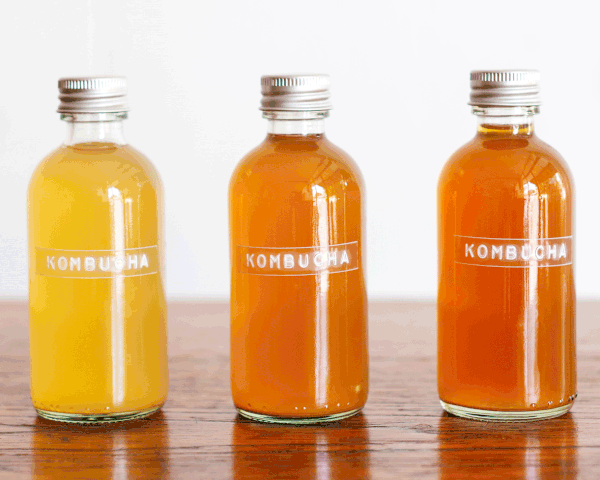
Getty Images
One of the most popular fermented beverages that also dates back centuries and has now become mainstream in recent years is kombucha. Kombucha is a lightly carbonated, tea-based drink made with tea, sugar, and a symbiotic culture of bacteria and yeast (or SCOBY). Its flavor is generally sweet and sour or vinegary, although some are sweetener than others (check the label for grams of sugar to give you a sense of how sweet it is). Kombucha is very low alcohol (low enough for most brands to be sold legally as a non-alcoholic beverage), but there is still a trace of it present due to the natural fermentation (about 0.5 percent ABV). Want to give kombucha to your kids without the alcohol? TIM TAM TUMMY offers the first kids kombucha—it’s low in sugar, alcohol free, and comes in a kid-sized can with a variety of friendly flavors (you’ll love it, too).
Certain Aged Cheeses

Getty Images
Probiotics will be in cheeses that have been aged, but not pasteurized. Examples include Swiss, Gouda, Edam, Gruyere, and raw Cheddar.
Related: 9 Cheeses You Can Eat Even If You're Lactose-Intolerant
Kvass
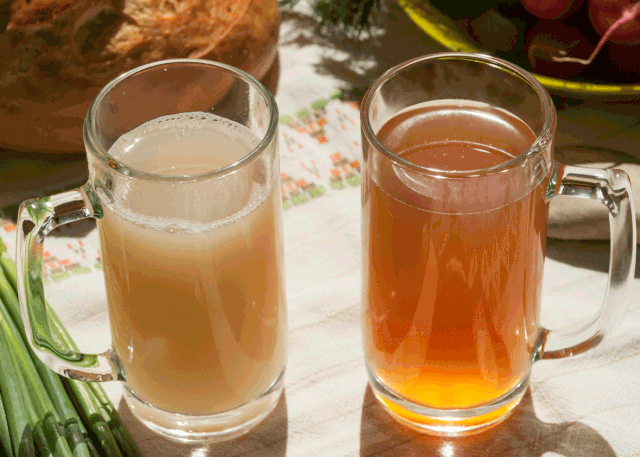
Getty Images
Kvass is a low-alcohol (0.5 to 1 percent ABV) fermented beverage that originates from Northeastern Europe and has been common in countries such as Russia and Ukraine for centuries. When made from grain, it can have a similar taste to beer, but we highly recommend beet kvass, which has a slightly salty, sweet, and earthy balance. In addition to the benefits of the live bacteria (aka probiotics), you get extra nutrients from the beet itself.
Tepache

delacalle.mx
Next to the supermarket fridges full of kombucha, you may start to see another canned beverage called tepache, such as this one from De La Calle!. Tepache originates in Mexico, dating back to Mayan culture, and is made from fermented pineapple rind and traditionally sweetened with a sugar called piloncillo, or Mexican brown sugar. Tepache ferments for a shorter period of time than kombucha so its taste is milder, and it has less alcohol.
Miso

Getty Images
Miso is one of the most versatile food sources of probiotics. Miso is made by mixing soybeans with a starter culture known as koji, a mold cultivated from rice. Over a period of months, the result is a delicious, umami-packed fermented paste that can be used in so many delicious dishes, including salad dressings and marinades, seasoning for soups, broths, and stews, in baked goods for the perfect balance of sweet and savory. In addition to probiotics, miso is also a source of Vitamin K, manganese, zinc, and calcium and is also a complete protein, meaning it has all of the essential amino acids for health. For maximum probiotic benefits, use miso in raw food preparations or add it after cooking so the heat doesn’t destroy the good bacteria.
Related: Skip Takeout—Here's How to Make Miso Soup at Home
Natto
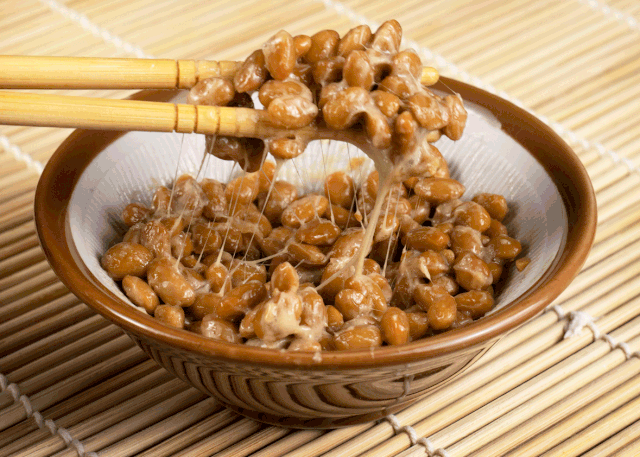
Getty Images
Natto is a traditional Japanese food made from fermented soybeans. It happens to be a source of probiotics and one of the few sources of Vitamin K2, an important vitamin for bone and heart health because of its role in calcium metabolism and blood clotting. Natto is packed with umami flavor and has a unique texture—often described as slimy, sticky, and stringy—but if you’re open-minded, we encourage you to give it a try! Try a small amount (a little goes a long way) alongside rice and top with soy sauce and Japanese yellow mustard for the traditional experience. You can find natto in most Japanese or Asian speciality supermarkets in the refrigeration aisle or online.
Nama Shoyu

Getty Images
Unlike most soy sauces, which are pasteurized, nama shoyu is a freshly pressed Japanese raw soy sauce. Because it’s unpasteurized, it retains the beneficial live bacteria and can be a source of probiotics.
Gochujang
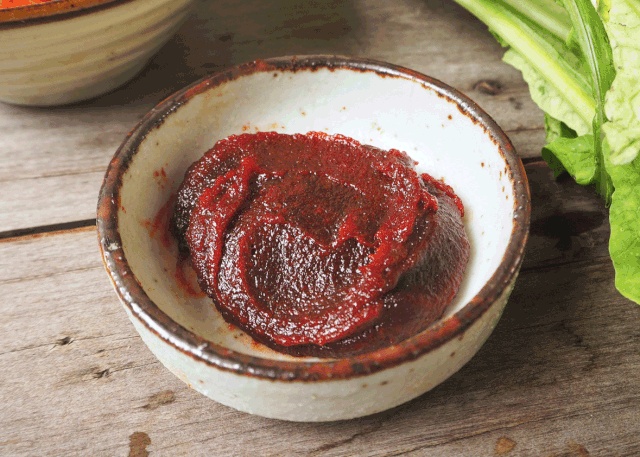
Getty Images
Another fermented paste, gochujang is a staple condiment in Korean cuisine. Gochujang is made primarily of gochugaru (Korean chili powder), glutinous rice, and fermented soybeans and is both sweet and spicy. Gochujang can be used in marinades for proteins, such as in Korean bulgogi, in dipping sauces, or added to soups and stews.
Fermented Olives
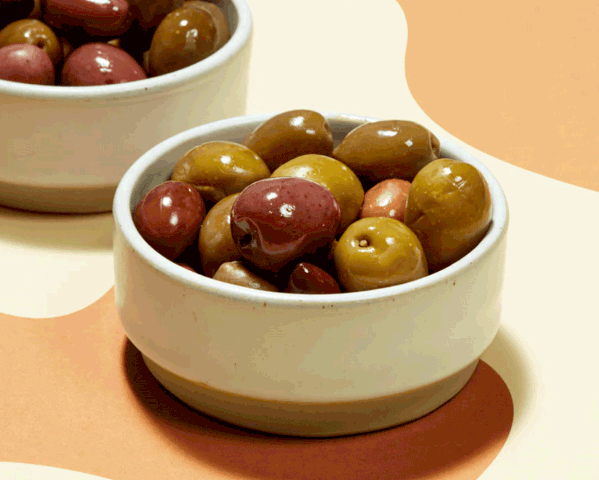
bigpicturefoods.com
Olives may not immediately come to mind when thinking about probiotic foods, but the process of turning freshly picked olives into the olives we know and love is fermentation. Not all olives contain probiotics though—most are just lye and heat treated and packed in a vinegary brine for a short period of time. Make sure you look for indications on the label that the olives have been naturally fermented, such as the ones from Big Picture Foods that are never chemically accelerated, and packaged in a probiotic-rich mother brine, meaning the olives are packed with all of the beneficial bacteria developed during fermentation.
Tips
Steer clear of shelf-stable olives with additives such as acetic acid, ascorbic acid, and lactic acid, which do not have the same probiotic benefits.
Sour Pickles
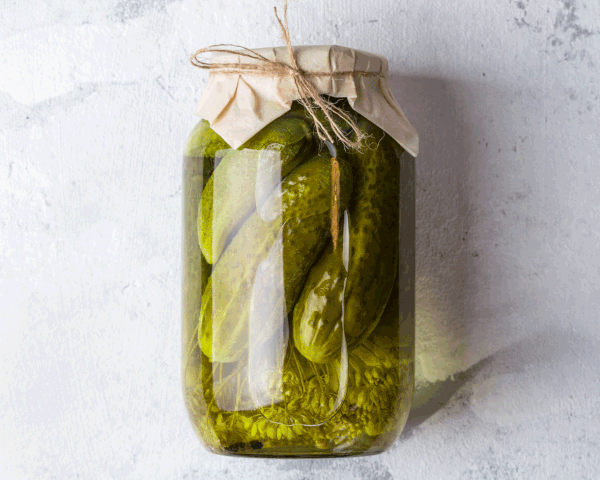
Getty Images
Pickles that undergo lacto-fermentation are a great source of probiotics. However, not all pickles provide probiotics. Many products labeled as pickled are not fermented—instead they’re just quick-pickled, meaning they get soaked in a sweet-salty, vinegary brine, but don’t have any live active bacteria present (they’re delicious, but just not probiotic-rich). For truly fermented pickles, opt for those that say they’ve been fermented on the label (try Bubbies, for example); or reach for sour pickles, which get their sour flavor from the natural fermentation process, rather than from vinegar.
Fermented Seaweed
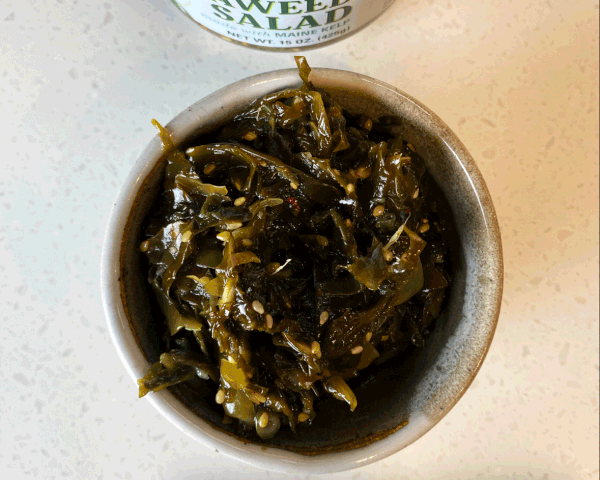
atlanticseafarms.com
Seaweed is already recognized for its plethora of nutrients and environmental benefits, but fermenting it gives it an extra nutritional boost. By combining gochujang with fermented kelp, this Spicy Gochujang Seaweed Salad from Atlantic Sea Farms, for instance, hits all the right notes and is a powerhouse probiotic food. If spice isn’t your thing, there’s also Fermented Seaweed Salad without gochujang.
Fermented Hot Sauce
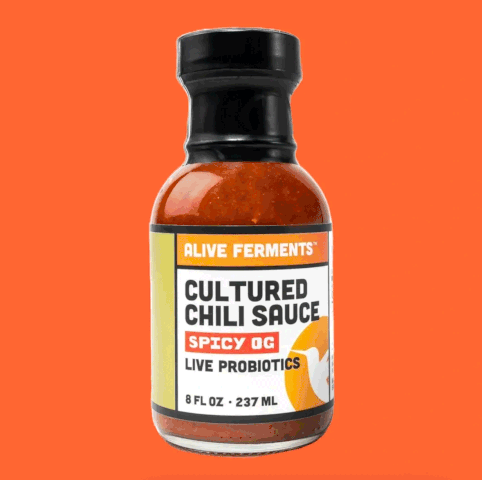
aliveferments.com
Fermented hot sauce is made by—you guessed it—fermenting hot chili peppers. A lot of hot sauces are made by combining chil peppers with vinegar and salt, and sometimes additional spices. Others are made by mixing peppers with salt and water and storing in a sealed jar, resulting in lacto-fermentation—these ones are good sources of probiotics. Look for versions like Alive Ferments, which say they have live active cultures.
Fish Sauce
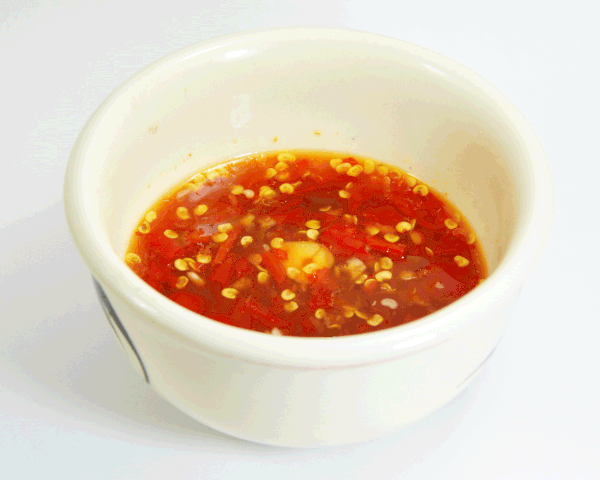
Getty Images
A staple in East Asian and Southeast Asian cuisines, fish sauce is a seasoning liquid made from fermenting small fish (usually anchovies) and salt—the resulting sauce is the liquid byproduct from the salted fish. The fish can be fermented for several months or up to several years, and live bacteria will be present as a result of the fermentation, unless the fish sauce is pasteurized.
Umeboshi

Getty Images
Umeboshi, commonly known as salted or pickled plums, are a mixture of ume plums, salt, and red shiso (which gives it its distinct red color) that undergo fermentation. A traditional Japanese condiment, umeboshi is a great accompaniment to rice or even a richer meat-based dish.
Frequently Asked Questions
Do other foods touted as being gut-friendly, such as sourdough bread, also contain probiotics?
While sourdough bread is a fermented food and may be an easier bread to digest, the heat from baking the bread will destroy the live bacteria from the sourdough starter. Also left off of this list for similar reasons is tempeh, a fermented soy product—it is technically a source of probiotics, but it’s unlikely that any meaningful amount of these live bacteria can survive the cooking process once it’s prepared for consumption.
Is there an ideal amount of probiotics needed to benefit health?
Probiotics are measured in colony forming units (CFU). This is not always indicated on the label, but for reference, yogurt can contain a range of 90 billion to 500 billion CFU per serving. In comparison, kimchi can contain around 15 billion CFU per 1 cup (150g). Many probiotic supplements contain 1 to 10 billion CFU per dose or more. But don’t get stuck on the specific amounts. Instead focus on variety. Archer recommends people eat more than 30 different types of whole foods a week (including a mix of probiotic and prebiotic foods) to increase their gut microbiome diversity. There is research to support this recommendation: The American Gut Project found that participants who consumed more than 30 different plant types per week had gut microbiomes that were more diverse than those who ate 10 or fewer types of plants per week. Dr. Ramsey encourages everyone to start stocking their kitchens with more probiotic rich foods, “and even making some of your own fermented foods to promote gut health and personal evolution as an eater.” He wants to focus on people becoming more curious about these nutritious fermented foods instead of getting bogged down by specific strains and amounts. The bottom line: Mix it up as much as possible—when it comes to gut health, variety in the diet is key.
Should you pay attention to the specific types of live bacteria strains in a food?
When it comes to selecting a probiotic supplement, it can be worthwhile to consult a registered dietitian or another medical expert who specializes in digestive health about which strains have been researched to be most effective for certain digestive health concerns. However, when it comes to probiotic foods, the current consensus is that diversity and increased intake are generally the most important things to consider above all. “Eating a variety of plants and a variety of fermented foods [not only] makes sense from a practical standpoint to avoid food fatigue, but also from a biology standpoint,” according to Dr. Ramsey. Eating foods rich in probiotics shouldn’t be your only priority: It’s also important to eat food sources of prebiotics, which act as food for the probiotics. Dr. Ramsey points out that “different organisms eat different types of fiber,” reiterating the importance of eating tons of plants and overall variety.
Tips
What to Look for on Food Labels to Identify Probiotic Foods
The phrase "Live Active Cultures"
The actual bacteria names in the list of ingredients (e.g. Bifidus, Streptococcus Thermophilus, Lactobacillus Acidophilus, or Lactobacillus Casei)
Indications that the product has not been pasteurized after the introduction of live bacteria
Avoid heating probiotic-rich foods higher than 120 to 130F, the temperature at which most living probiotic bacteria are destroyed
Just Starting to Introduce Probiotic Foods Into Your Diet?
Probiotic first-timers should start with smaller amounts and increase gradually based on how they feel. Some individuals with Irritable Bowel Syndrome (IBS) who are sensitive to FODMAPs may need to limit their intake of certain fermented foods high in FODMAPs. Archer agrees, adding that “some people with digestive issues may not tolerate probiotic-rich foods at first, however, as they work with a health professional on gut healing, they may be able to tolerate these foods better.”
Those who are immunocompromised or pregnant also need to be cautious of unpasteurized foods due to the potential food safety risk.
For more Real Simple news, make sure to sign up for our newsletter!
Read the original article on Real Simple.

